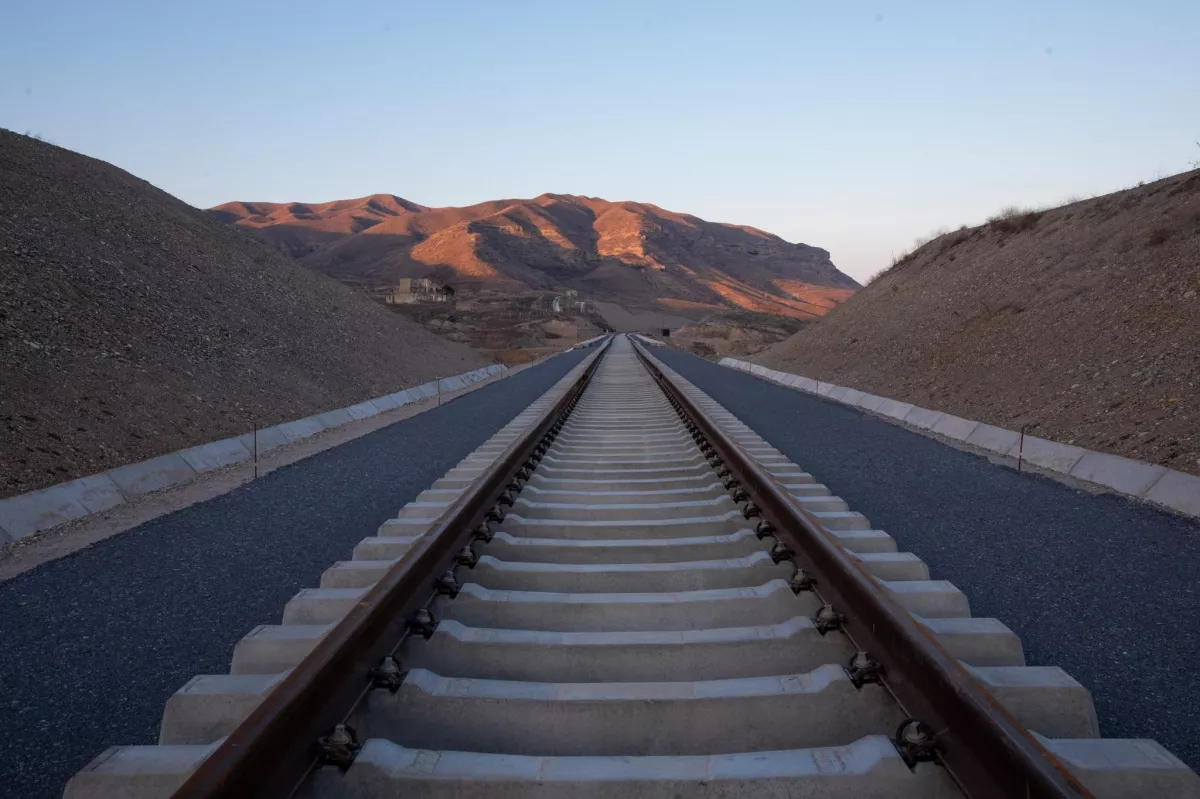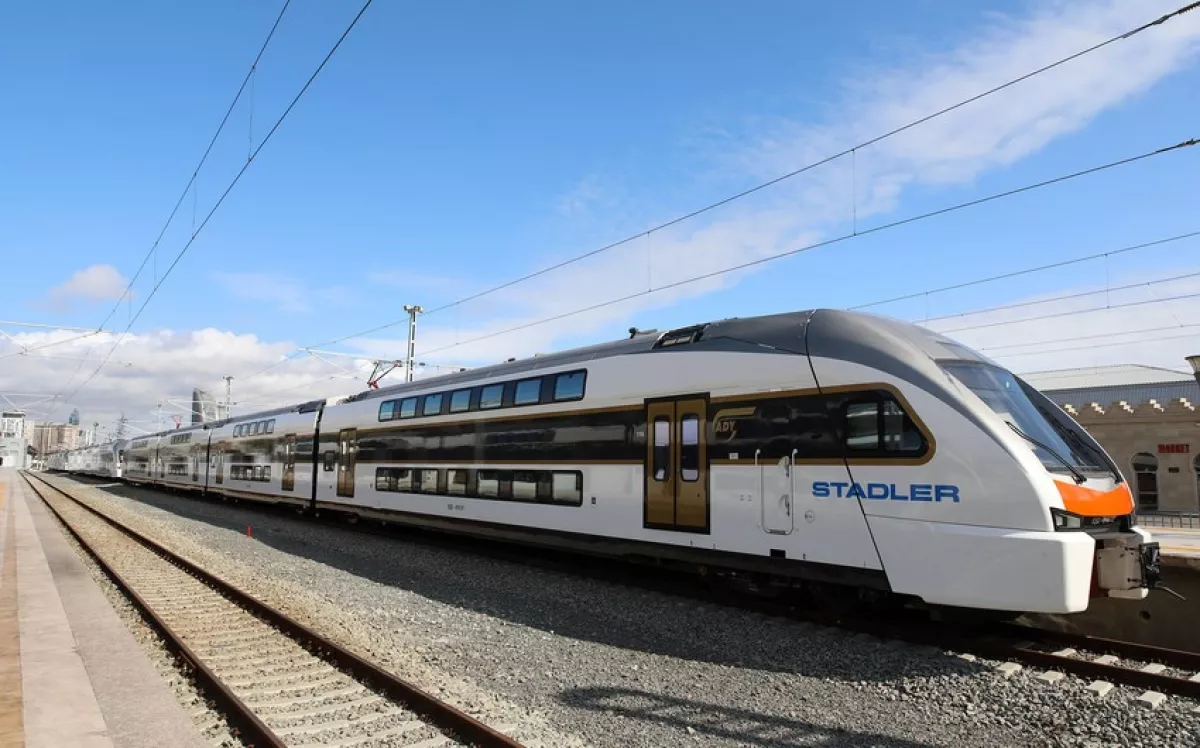Azerbaijan Railways modernising transit corridors with ADB-backed investments Digitalisation and green transformation
As a key transportation hub of the Middle Corridor, Azerbaijan is focused on developing modern transport and logistics infrastructure, with the railway sector being a top priority. Azerbaijan Railways (ADY) is modernising the infrastructure of the Trans-Caspian International Transport Route (TITR) and the North-South corridors, as well as digitalising all operational and cross-border processes. In implementing these reforms, ADY is actively cooperating with the Asian Development Bank (ADB), which provided credit lines exceeding $150 million at the end of last year. The ADB intends to support ADY’s efforts to reduce its carbon footprint: recently, the bank approved a technical assistance grant of $1.25 million for the decarbonization processes.
Among the leading international donors financing infrastructure projects in Azerbaijan, the Asian Development Bank (ADB) has traditionally played a prominent role. Over a quarter of a century of cooperation, the bank has provided over $5 billion in loans to the country, with approximately $1.5 billion allocated to the development of the transport and logistics sector. The ADB's interest in Azerbaijan's transport sector is explained by the country's significant transit potential, located at a strategic crossroads of the Eurasian continent, as well as the years of efforts by Azerbaijan to modernise its rolling stock and port and railway infrastructure. According to ADB experts, there has been a notable increase in freight traffic along the Middle Corridor in recent years: in 2023, the volume of transit shipments along the Trans-Caspian International Transport Route (TITR) grew by 86%, reaching 2.7 million tons, and in 2024, it approached 4 million tons. Economic analysis indicates that by 2030, freight volumes along this route will nearly triple, reaching 11 million tons.

To support efforts to enhance the capacity and technical modernisation of the Middle Corridor, at the beginning of last year, the ADB reached an agreement with the member states of the Trans-Caspian International Transport Route (TITR) Association to allocate a grant for the development of a strategy for the further expansion of this route. Earlier, the ADB financed a large-scale project in Azerbaijan—the "Railway Sector Development Program" worth $400 million—aimed at improving the provision of railway services and financial operations of Azerbaijan Railways (ADY).
Azerbaijan's participation in the International Transport Corridor (ITC) "North-South" also appears highly promising: preliminary estimates suggest that by 2030, freight traffic along the corridor could increase from 14.6 million tons to 24.7 million tons. As a result, the ADB is actively involved in the development of Azerbaijan's section of the ITC, financing the modernisation of railway infrastructure. It is worth noting that there is a significant need for the modernization of certain railway segments along this route in Azerbaijan: for instance, the capacity of the Baku-Yalama and Alat-Astara sections needs to be upgraded, and as part of the second phase, both segments will be synchronized to handle up to 15 million tons of cargo annually. The next step will be the reconstruction of the Alat-Osmanli-Astara railway. To expedite these projects, last year, Azerbaijan Railways (ADY) signed a loan agreement worth $131.5 million with the ADB. Specifically, the bank’s funds will be used to complete the rehabilitation of 166 kilometres of dual-track railway, including civil structures and railway crossings on the Sumgayit-Yalama section.
The work of Azerbaijan Railways (ADY) under these initiatives also includes the digitalisation of the transport corridor, the implementation of advanced communication and signalling systems, the laying of fibre optic lines, and more. Significant support for these efforts comes from the ADB, which provided a $47 million loan in October of last year for the digital transformation project of ADY. Over the past two years, Azerbaijan's railway authority has accelerated efforts to introduce IT innovations into the railway sector: the ADY Supervisory Board has approved and is implementing a separate digitalisation strategy, and a modern IT office has been established to create an innovative and dynamic environment across all departments of the agency. "ADY aims to transform Azerbaijan into a global transport hub and is expanding cooperation on the digitalisation of transport infrastructure with countries located along the routes of the 'North-South' and 'East-West' international transport corridors," says Andrey Iskrich, Head of the Digital Development Department at ADY.
Key goals and projects being implemented by the country's railway authority in the area of digital transformation were extensively covered by Caliber.Az in December 2024.
Another long-term development focus for Azerbaijan Railways (ADY) is reducing its carbon footprint. This effort is being carried out in several directions, including the expansion of electrified "steel" highways, which reduces the number of diesel locomotives in favour of electric ones. Currently, 100% of ADY's passenger trains operate on electric traction, and about four-fifths of freight is transported by modern electric locomotives. By the end of last year, approximately 63% of the country's railway network had been electrified.
Additionally, a transition to alternating current on key sections of the East-West and North-South international transport corridors has been completed, improving energy efficiency: new traction substations help save up to 30% of electricity. These steps, along with the introduction of energy-efficient LED lighting systems and other innovative methods in the operational system, have enabled ADY to reduce electricity consumption by 5%, natural gas by 16%, water by 23%, and CO2 emissions by 9% since 2023. This work will continue to expand: it is worth noting that in 2023, ADY became a member of the UN Global Climate Pact and conducted a corresponding assessment based on international standards such as GRI and SASB. ADY is now preparing to present the first "Sustainability Report" to the public based on the results of this assessment.

Efforts to decarbonise Azerbaijan Railways (ADY) are supported by the widespread use of renewable energy sources (RES) within the agency's structures. The potential of solar energy to power traction substations was first utilised in 2015, when the Baku-Khirdalan-Sumgayit section was put into operation after reconstruction. Following this, the Bilajari and Ganja locomotive depots were equipped with hundreds of solar panels, providing electricity not only for depot operations but also for heating and air conditioning systems. Today, the railway authority is studying advanced projects in Europe and Asia involving the placement of solar panels along railway lines and on the roofs of wagons. Over time, the implementation of this experience will allow Azerbaijan to save electricity for lighting, air conditioning in trains, as well as power communication, signalling, and other trackside equipment.
It is worth noting that in 2022, a memorandum was signed between Azerbaijan Railways (ADY) and the UAE-based company Masdar, aimed at exploring the potential for using renewable energy sources (RES) in the railway sector and implementing a comprehensive energy efficiency program.
Interestingly, the Asian Development Bank (ADB) is also ready to support ADY's efforts to reduce its carbon footprint and improve energy efficiency: recently, the ADB approved technical assistance amounting to $1.25 million for the decarbonization project of Azerbaijan Railways. It has been reported that as part of the project, $250,000 will be allocated from the Technical Assistance Special Fund, and $1 million will come from the Smart Energy Innovation Fund for solutions.








